Tel Dan Nature Reserve – Visitors Guide (with Map and Trails)
At Tel Dan, you can find the Dan stream, the main source of the Jordan river. Moreover, you can also see the remains of a 5000-year-old city. And you can explore the reserve using several trails.
Table of Contents
Map
Tel Dan Nature Reserve is located in Northern Israel, not far from Kiryat Shmona and near Kibbutz Dan, by Dan Stream.
Directions for drivers: Link to Waze and Link to Google Maps
Directions for public transport: Link to Moovit
Interactive map of the area:
And here is a map and general info sign at the entrance to Tel Dan.
Note: you can click on the image to enlarge it.
And since we showed the previous photo, let’s go over the Tel Dan Nature Reserve trail map.
Tracks
Here is a closeup of the map from the official brochure:
And here is the map that you can find at the entrance to the site:
Note: you can click on the maps to enlarge them.
You can choose the desired hike from several available trails. Here are the suggested trails according to the entrance sign. But you can always combine and create your path.
| Color | Description | Approximate Time to Complete |
|---|---|---|
| Red | The shortest track. It offers views mostly of the Dan River, the most important source of the Jordan river. You will also visit the flour mill and wading pool. | One hour |
| Green | The medium trail. In addition to the points of interest of the red trail, you will visit Ein Dan and “Paradise Springs.” | 1.5 hours |
| Yellow | The longer hike. It will lead you to the ancient Dan city, including the Israelite gate, Canaanite gate, and cultic site. | Two hours |
| Yellow-green | Combination of the two listed tracks. | 2.5 hours |
Since the park is not vast, you can choose the points of interest you want to visit and create a trail for yourself.
Note: if you visit Tel Dan with small kids and look for the shortest way to the wading pool, take the red trail.
Opening Hours
Sunday – Thursday and Saturday: 8:00 – 17:00 (16:00 in winter).
Friday: 8:00 – 16:00 (15:00 in winter).
On holiday eves, usually 8:00 – 13:00.
Note: Since the pandemic, the Israel Nature and Parks Authority has started limiting the number of people in each park. Thus, reservations are recommended through the official site (you can find the link below).
Entrance Fee
Adult – 28 NIS, child – 14 NIS, and student – 24 NIS. Free for National Parks annual subscribers.
If you visit several National Parks, consider purchasing a combo ticket. For additional information, see National Parks and Nature Reserves.
Note: opening hours and ticket prices were updated in November 2022. In any case, recheck the official site before visiting.
Yellow-Green Trail
The yellow-green trails cover almost everything. Thus I will show the highlights of both of them.
Wheelchair Accessible Trail
All trails start together, and at some point, they split. Here are the signs at the split junction:
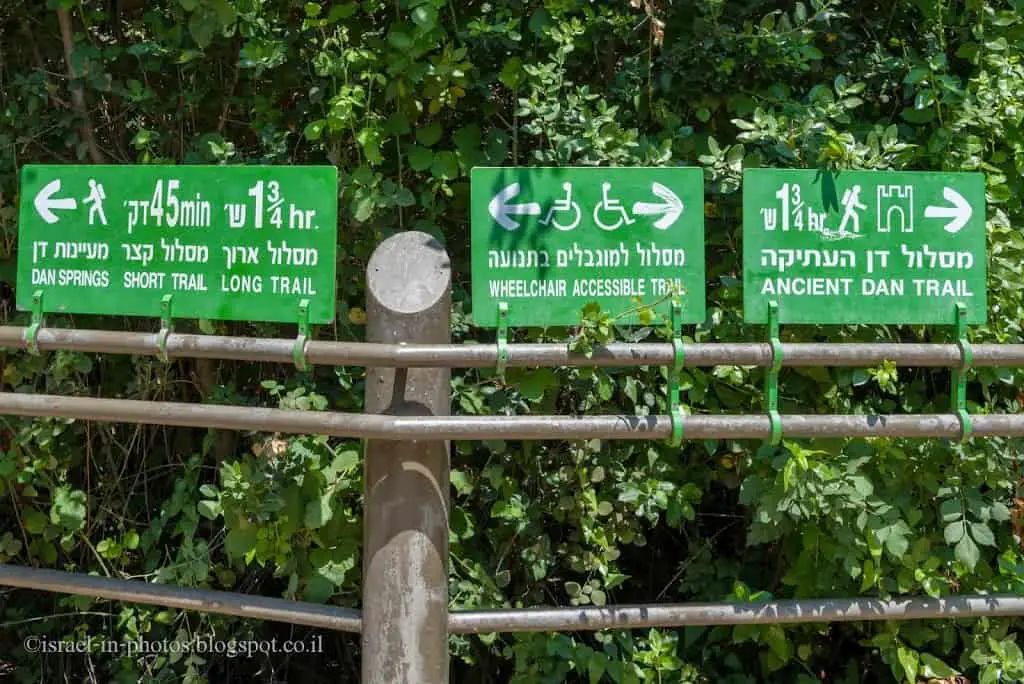
Tel Dan reserve was upgraded in recent years, and now significant parts of the short trail are wheelchair and baby strollers accessible.
Hiking trails for people with difficulty walking and families with baby buggies – in the entrance plaza are accessible toilets and accessible picnic benches. Accessible benches can be found throughout the site, alongside the hiking trails. The accessible trail begins at the entrance to the site, follows the first part of the hiking trail, and reaches the wading pool, the Israelite Gate, and the Abraham Gate (the Canaanite Gate). Another short trail goes to a new accessible observation point, looking out over a wooden terrace towards the flowing waters of the Dan Stream.
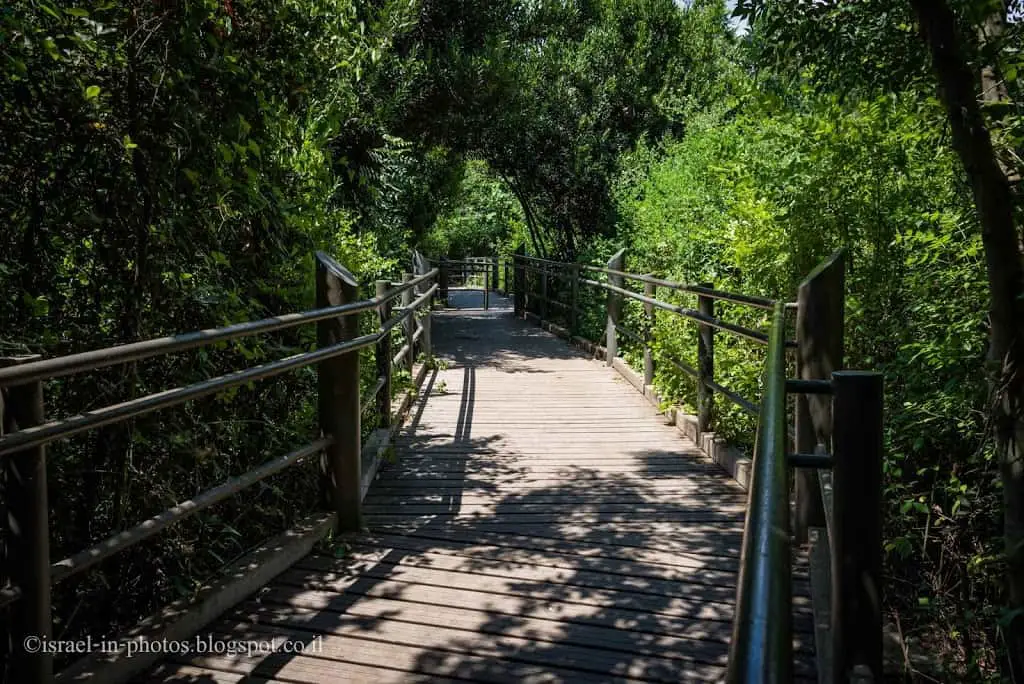
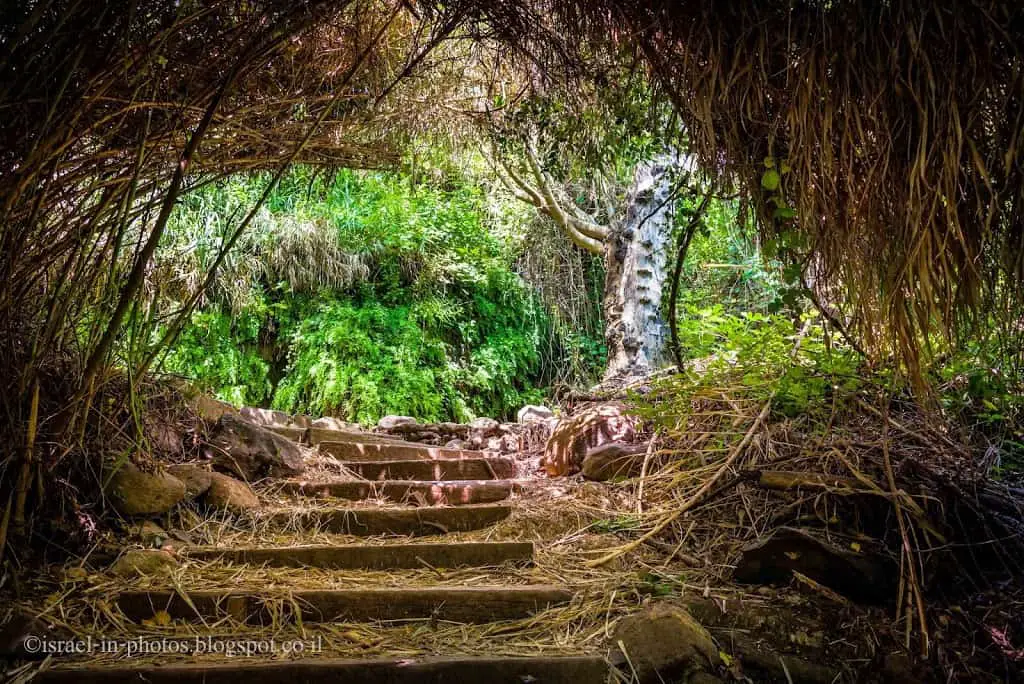
Dan Forest is one of the “greenest” forests in Israel. That is mostly due to the melting snow from Mount Hermon. And as a result, large quantities of water pass at Dan stream and make this nature reserve luscious green.
Wildlife
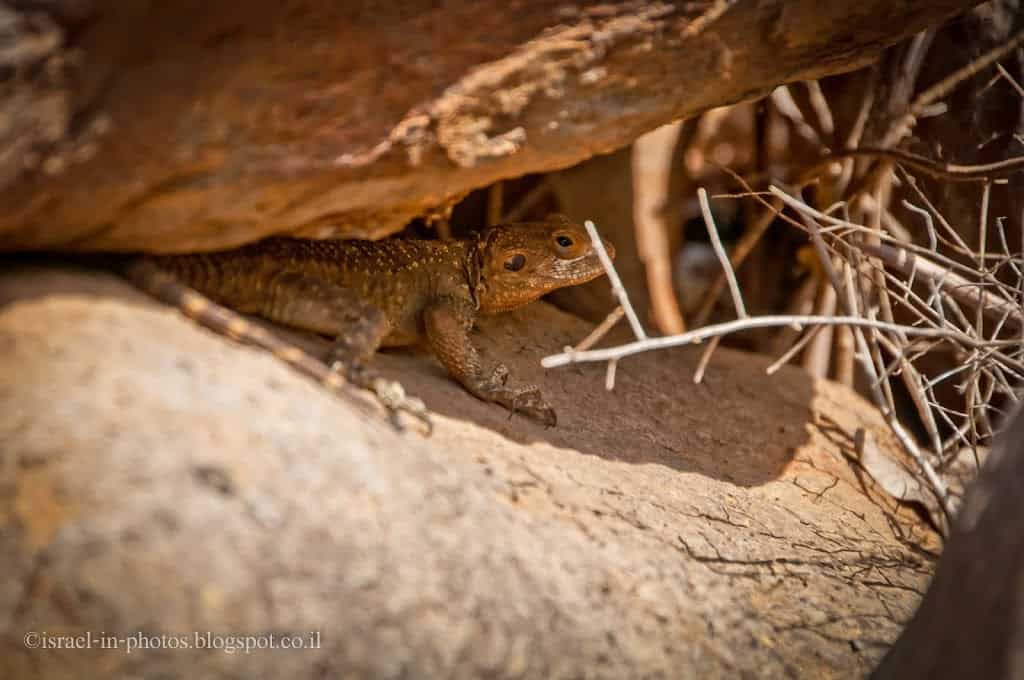
Despite the small size of the nature reserve, it is particularly rich in wildlife species in general, and water- and shade-loving species in particular – different types of fish, amphibians (including the Near Eastern salamander), and many invertebrates. Particularly noteworthy among the mammals are the otter and the wild boar. On rainy days or immediately afterward, visitors to the nature reserve are likely to meet the rare salamanders alongside the trails.
Abraham Gate – Canaanite Gate
One of the most important finds at this site is the ruins of the Canaanite city of Laish, which Dan’s tribe captured during the period of the Judges. The Israelite city gate has been restored, as has the Canaanite gate, perhaps the earliest constructed arch ever discovered.
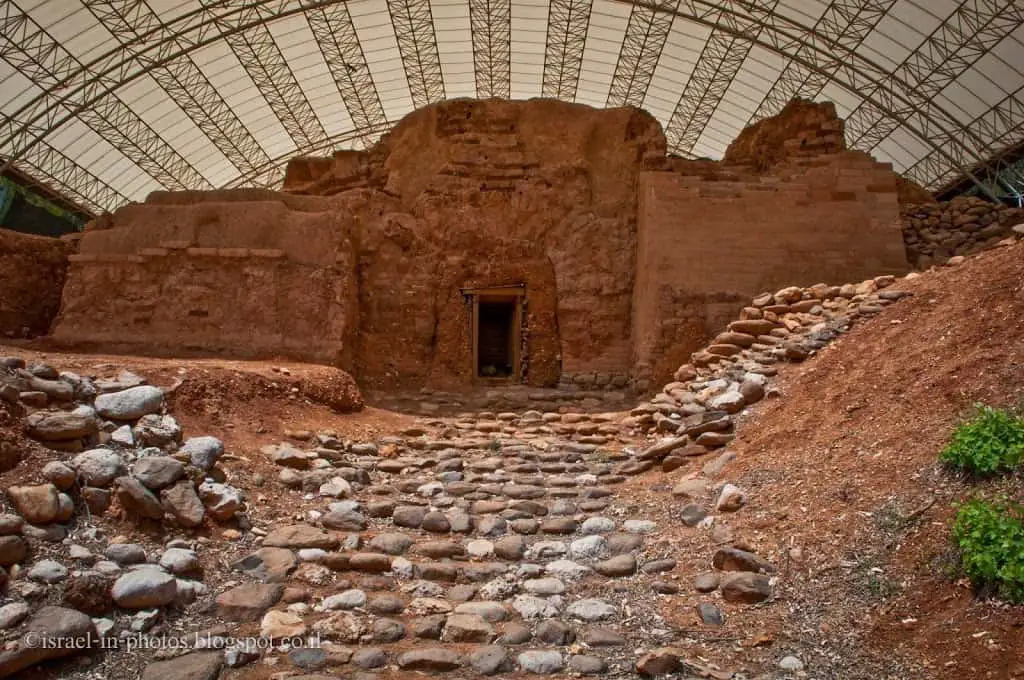
Abraham Gate (the Canaanite Gate) – the most impressive find of the Tel Dan excavations is the ancient Canaanite Gate. The gate was built of mud bricks and had three arches that are considered to be the earliest of their kind in the world. The gate has been preserved to its full height of 7 m. Nature and Parks Authority has implemented measures to protect the gate from weather damage.
Israelite Gate
The Israelite Gate – the remains of the entrance gate to the city of Dan and the fortification walls from the Israelite period. The remains of a palanquin were found at the site, on which the ruler of the city would have been elevated, alongside benches for the elders of the city.
Paradise Springs
This post title is “The Gate To Paradise,” thus will elaborate on this topic. You probably understood by this point, by “Gate,” I was referring to Canaanite Gate. And paradise refers to Paradise Springs. If you take the green trail, then you will pass through it.
Paradise Springs – calmly babbling brooks creating channels along which a well-developed riverside forest grows. It is the only place in Israel with a “wetland forest” of northern trees – the narrow-leafed ash and bay laurel. This forest is shady throughout the year and is home to many species of climbers. Cool rivers flow at the foot of the trees, populated by rare salamanders and invertebrates.
The many surveys carried out at the nature reserve indicate that the salamanders are mainly found in the Paradise Springs area, where they have not only shade and water but also stones among which they can conceal themselves.
Ritual Site
Ritual site – another unique find is the ritual compound, with a paved platform. This structure recalls the biblical stories of the golden calves.
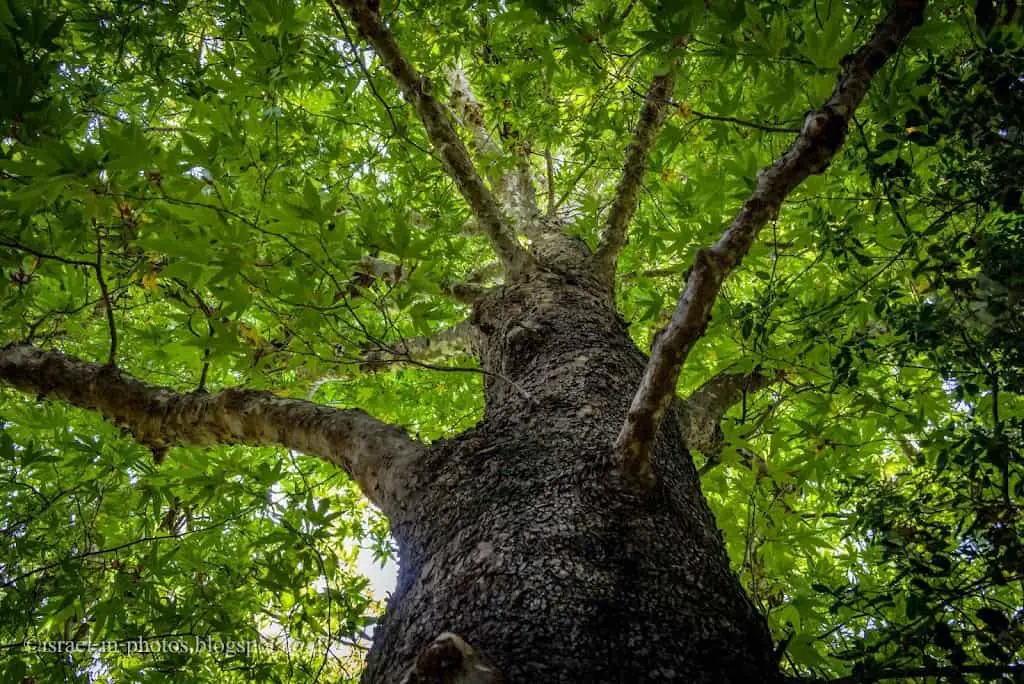
Is it my association, or was this tree created with love?
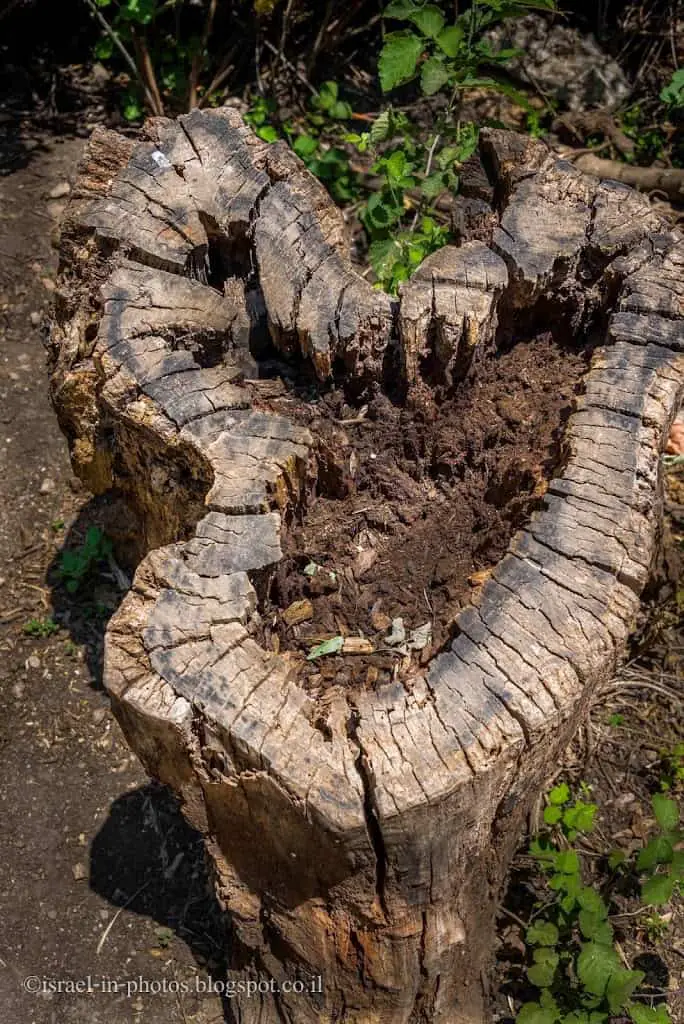
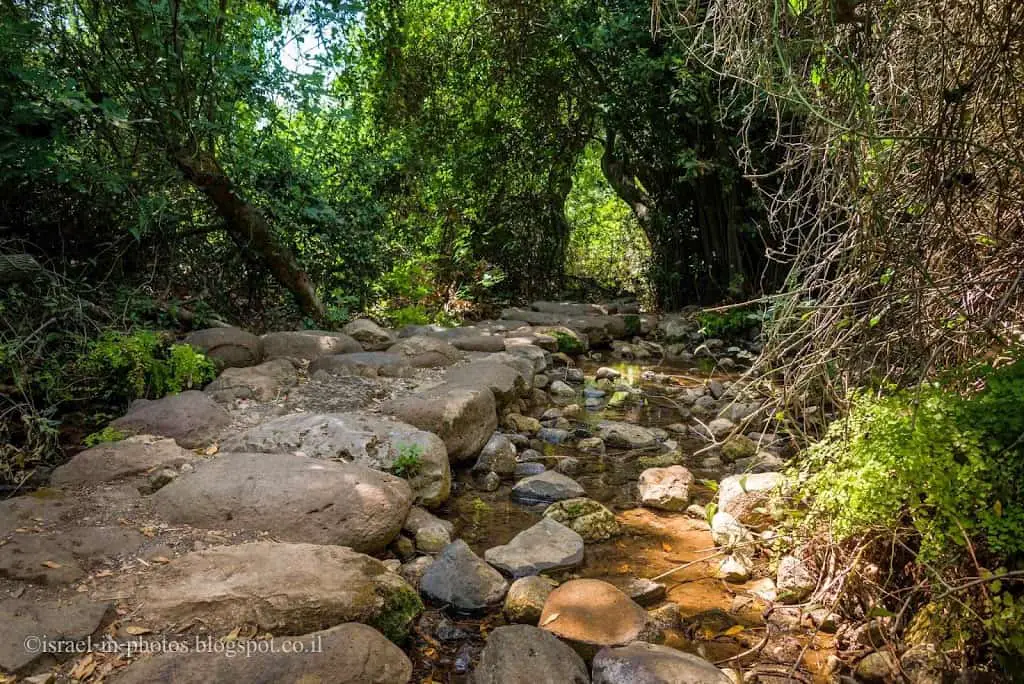
Flour Mill
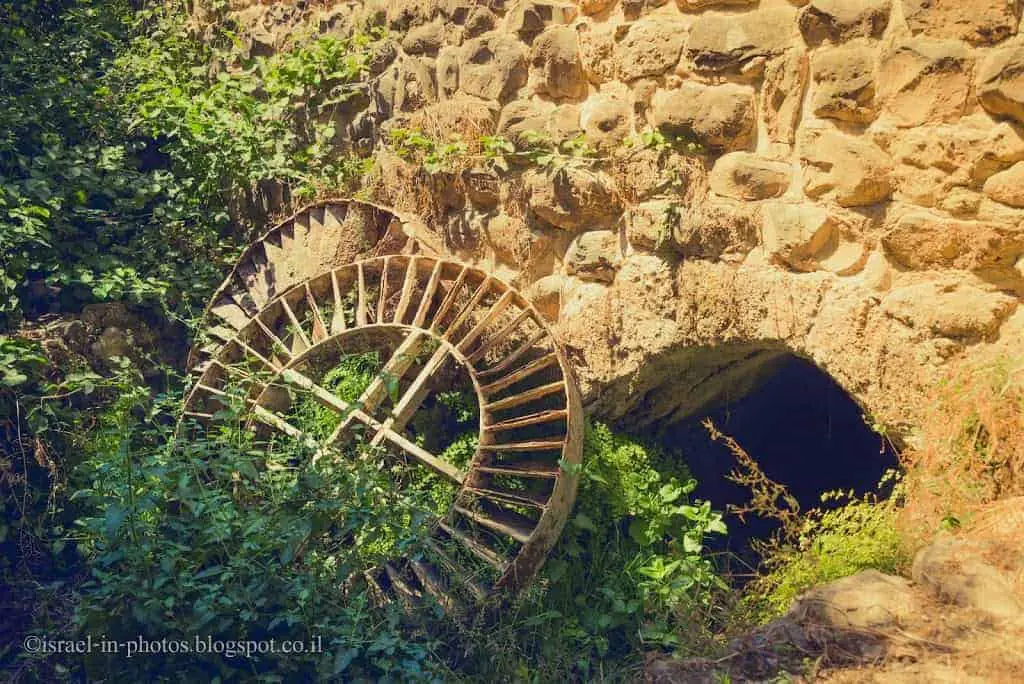
The flour mill – the remains of some flour mills were found at Tel Dan, which used the strong current of the water to turn the millstones and grind flour. The flour mill that can be seen today along the hiking trail is the latest of them and was in operation until the 1960s. It has been conserved, and work was carried out to stabilize the walls, which were in danger of collapse. The aqueduct bringing water to the mill has also been conserved and now carries water to a part of the nature reserve where water has not flowed for many years.
Wading Pool
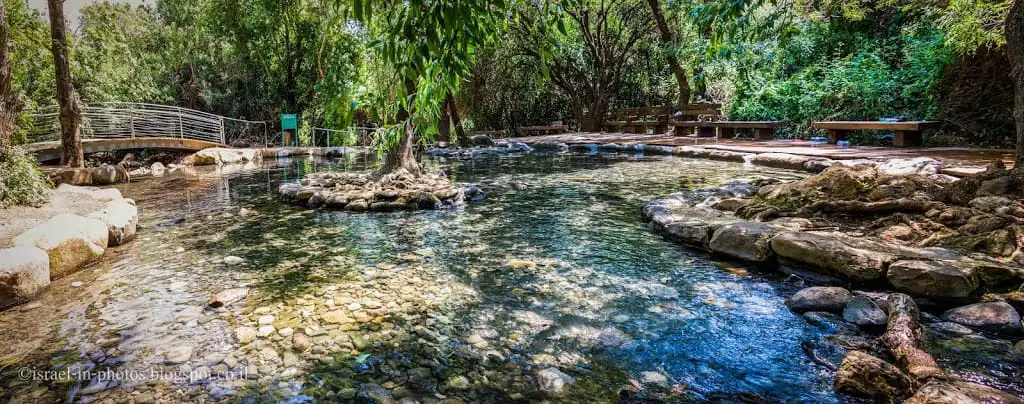
And here we are at the Wading pool. Usually, you will find many kids playing there, but since that visit was in the middle of the week, we were the only ones there.
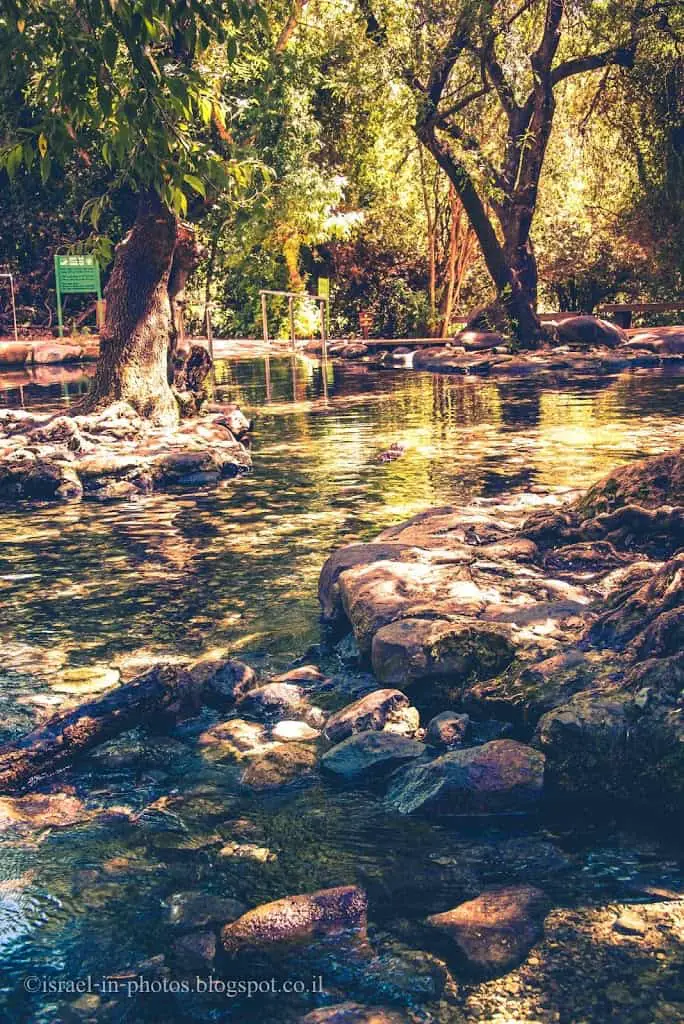
Wading pool – a shallow pool that is part of the hiking trail. An excellent place to get your feet wet in the cool and refreshing waters of the pool. An accessible path for people with difficulty walking reaches this pool. It has recently been expanded and surrounded by a wooden deck and benches, accessible to people with disabilities. The wading pool is the only place in the nature reserve where it is permitted to paddle in the water. Wading is prohibited in other parts of the nature reserve to protect the natural habitat from the matter being stirred up from the bed of the river.
Flora
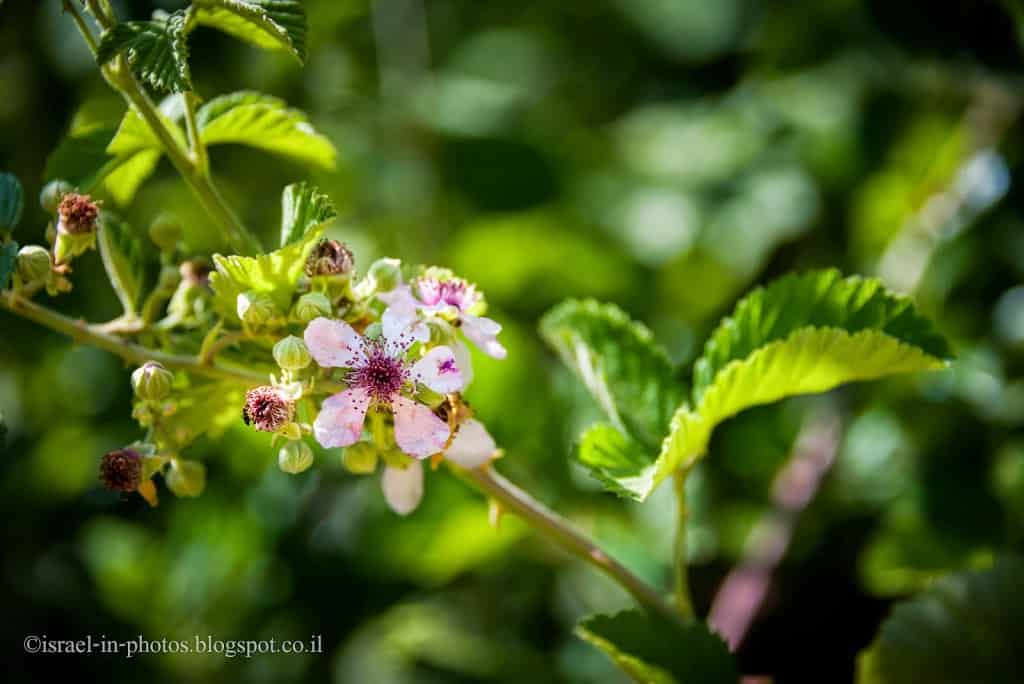
Tel Dan nature reserve has a large variety of wild plants from some different areas, in particular, “northern” plants that grow alongside the cool flowing brooks. One of these, the marsh fern, grows nowhere else in Israel, while for others, this is the southernmost point at which they are found. In addition to flowering plants, the reserve also has a great diversity of lichen and algae.
Dan Tribe
The city of Dan was mentioned in the Bible. It is the northernmost city of the Kingdom of Israel and belonged to the tribe of Dan. And at Tel Dan, the Biblical Dan’s remains were found (the Archeological findings include the Ancient Dan with the Israelite and Canaanite gates).
Moreover, each city needs a supply of freshwater. Dan stream, the most significant of the three Jordan river sources, has a powerful flow all year round and provides the city with water.
Tel Dan – the remains of a 5000-year-old ancient city. The city reached its height during the Canaanite and Israelite periods. In Canaanite times, it was called Laish or Leshem. The town is mentioned in the Bible, particularly in connection with the city’s capture by the tribe of Dan, which migrated here from its original land in the Judean plains and changed its name to Dan after the forefather of the clan. Dan was a significant reference point in the unified kingdom – “from Dan to Beersheba.” After the nation was divided, Jeroboam, son of Nabat, made Dan one of the two centers of worship in the Kingdom of Israel, at which golden calves were set up. The city decreased in importance with the development of the nearby town of Panias (Banias).
Note: unless stated otherwise, all quotes were taken from the official site.
Dan in the Bible
In the Bible, Tel Dan’s site makes its first appearance in Genesis 14:14 as a place unto which Abram chased the captors of Lot, but in two other narratives, the site features more prominently. In Judges 17-18, it is the final resting place for the nomadic tribe of Dan. They leave the Coastal Plain and overpower a peaceful and unsuspecting people of Canaanite Laish (the same name of the city in 18th century BCE texts from Egypt and Syria. In the 15th century BCE conquest list of Thutmose III). And renaming the city Dan and installing a Levitical priest descended from Moses as a priest in a shrine there.
The site’s religious significance is highlighted again in 1 Kings 12 in a narrative that describes Jeroboam’s installation of a golden calf at the site accompanied by sacrificial pilgrim festivals (cf. also Amos 8). Dan is also mentioned as a victim of the conquest of Ban-Hadad of Aram in 1 Kings 15:20. And as the northern limit of the kingdom’s idealized borders in the biblical refrain “from Dan to Beersheva” in the biblical histories (cf. Jeremiah 4:15).
Source: teldanexcavations.com
Besides, if you get tired of the ruins, you can dip in a wading pool. The pools are the reason why families with kids love this nature reserve. And not in all nature reserves entrance to the water is allowed. For example, at Banias Nature Reserve, entry to the water is prohibited.
What does Tel Dan mean?
The name Tel Dan consists of two words. You probably met the word Tel in many places all over Israel. Shortly, Tel is a hill created by many generations of people living and rebuilding on the same spot (you can find additional info at Megiddo National Park). And the city was named Dan after the forefather of the clan, the Dan tribe.
What Does Dan Mean?
Dan, in Hebrew, means to discuss, judge, debate, or sentence. It can also mean that somebody judged or sentenced another person.
According to the Book of Genesis, Dan (Dan, “judgment” or “he judged”) was the fifth son of Jacob and the first son of Bilhah. He was the founder of the Israelite Tribe of Dan. In the biblical account, Dan’s mother is described as Rachel’s handmaid, who becomes one of Jacob’s wives. (Genesis 30:1–6)
The text of the Torah explains that the name of Dan derives from dananni, meaning “he has judged me”, in reference to Rachel’s belief that she had gained a child as the result of a judgment from God.
Source: Wikipedia
Tel Dan Excavations
Archaeological excavations of the ancient site of Tel Dan were renewed in 2005. And according to the official site, there were excavations in June and July of 2018. Thus, if you want to join the diggings for several weeks (minimum of two weeks is encouraged), check the official site.
Tel Dan Stele
The Tel Dan Stele is a broken inscribed stone discovered during excavations.
The Tel Dan Stele consists of several fragments making up a part of a triumphal inscription in Aramaic, left most probably by Hazael of Aram-Damascus, an essential regional figure in the late 9th century BCE. Hazael (or more accurately, the unnamed king) boasts of his victories over the king of Israel and his ally, the king of the “House of David” (“bytdwd”). It is considered the earliest widely accepted reference to the name David as the founder of a Judahite polity outside of the Hebrew Bible. However, the earlier Mesha Stele contains several possible references with varying acceptance.
A minority of scholars have disputed the reference to David due to the lack of a word divider between “byt” and “dwd,” and other translations have been proposed. The stele was not excavated in its primary context but its secondary use. The Tel Dan stele is one of four known inscriptions made during a roughly 400-year period (1200-800 BCE) containing the name “Israel,” the others being the Merneptah Stele, the Mesha Stele, and the Kurkh Monolith.
Source: Wikipedia
Tel Dan Stele is currently on display in the Israel Museum in Jerusalem.
Nearby Attractions
Here are several nearby attractions that might interest you:
Summary
We visited the Tel Dan Nature Reserve many times before and will return. It is a lovely place to visit. Besides the ruins, there is plenty of greenery, shade, and water. Thus it can serve as an excellent place for hotter days as well. And since this site is not large, you can either cover it in several hours or choose a different trail each time.
Have you ever visited the Tel Dan Nature Reserve? Tell us about your experience in the comments below.
That’s all for today, and I’ll see you in future travels!
Stay Tuned!
Additional Resources
Here are several resources that I created to help travelers:- Trip Planner with Attractions and Itineraries is the page that will help you create your perfect travel route.
- What is the Best Time to visit Israel? To answer this question, we will consider the weather, prices, holidays, festivals, and more.
- Information and Tips for Tourists to Israel will answer the most common questions tourists have about Israel (including safety, passports, weather, currency, tipping, electricity, and much more).
- Israel National Parks and Nature Reserves include a complete list, top ten, map, tickets (Israel Pass, Matmon, combo), and campsites.
- If you are looking for things to do, here are the pages for Jerusalem, Tel Aviv, Haifa, Sea Of Galilee, Akko (Acre), Eilat, Nazareth, Safed (Tzfat), and Makhtesh Ramon.

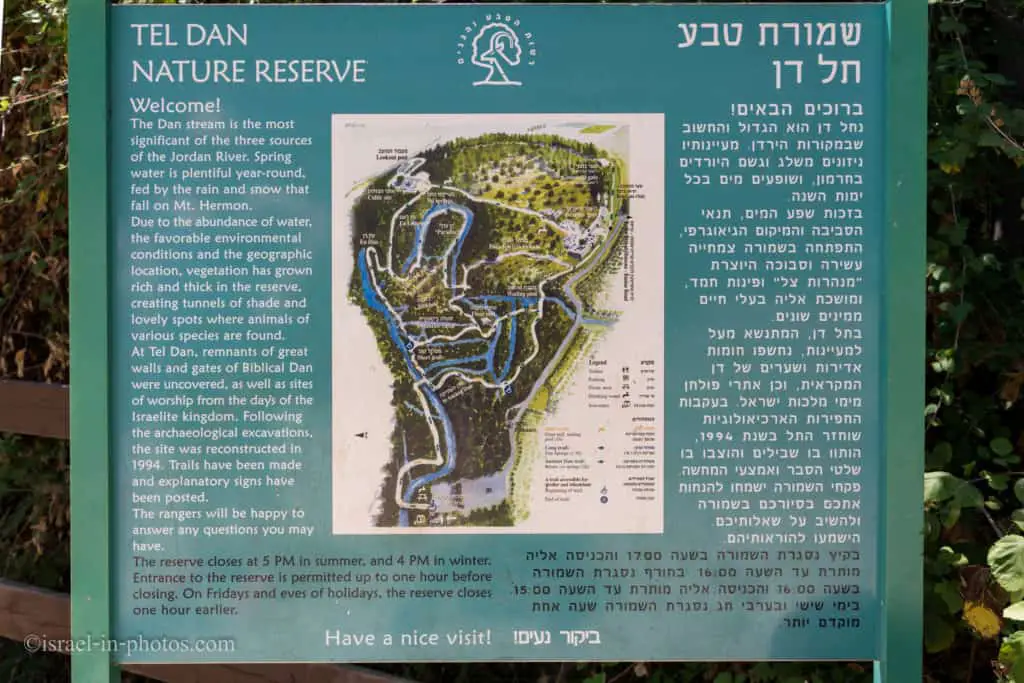
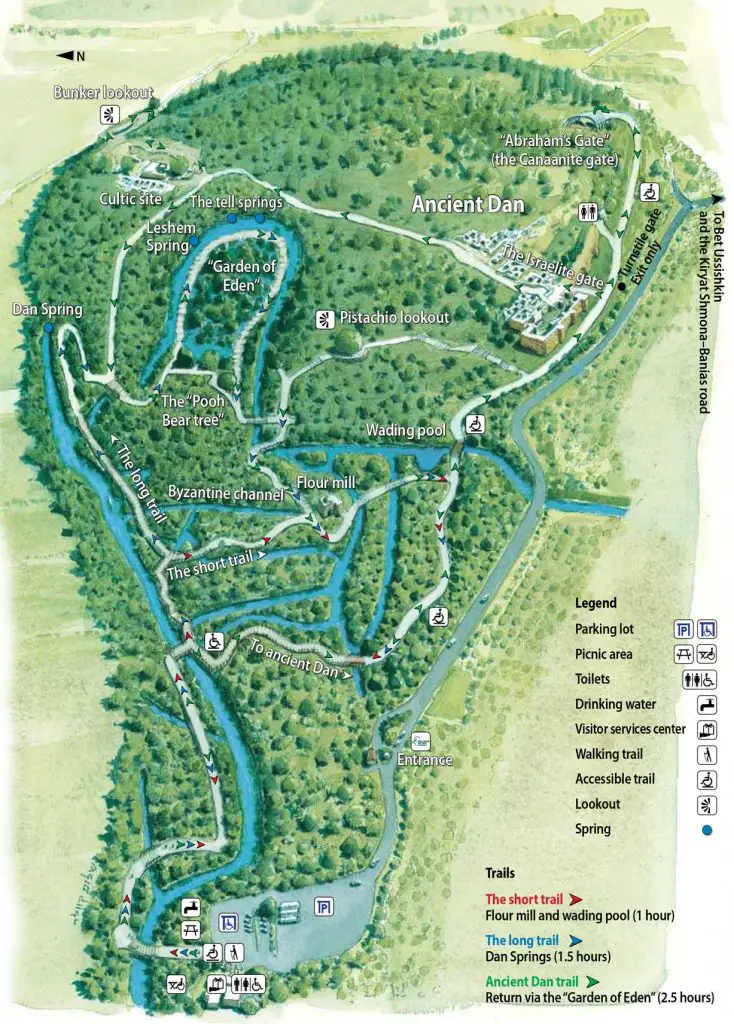
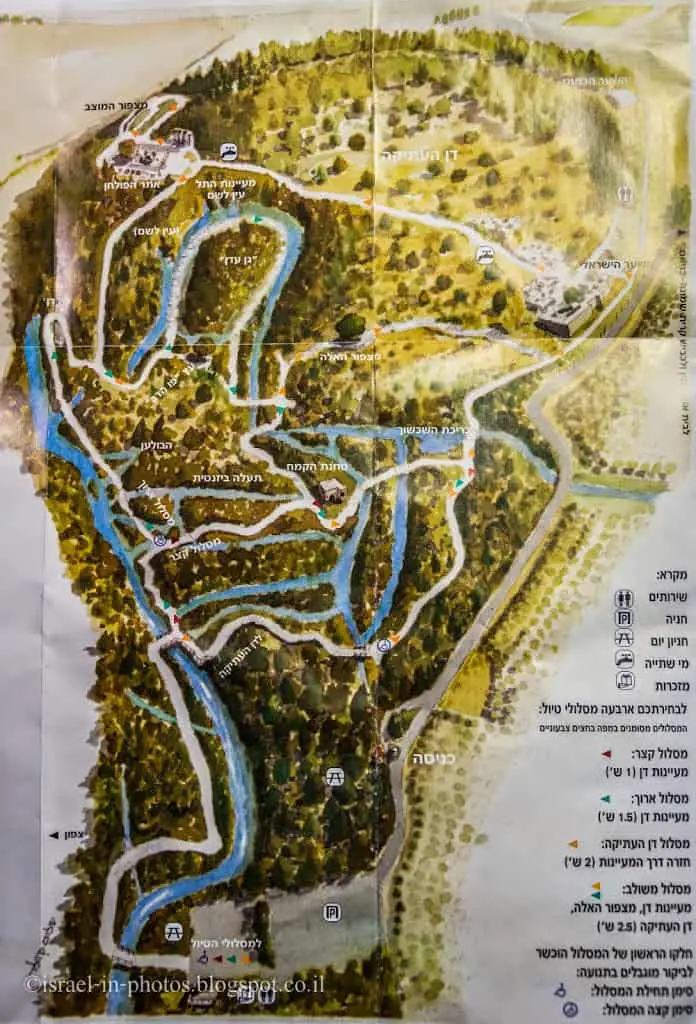


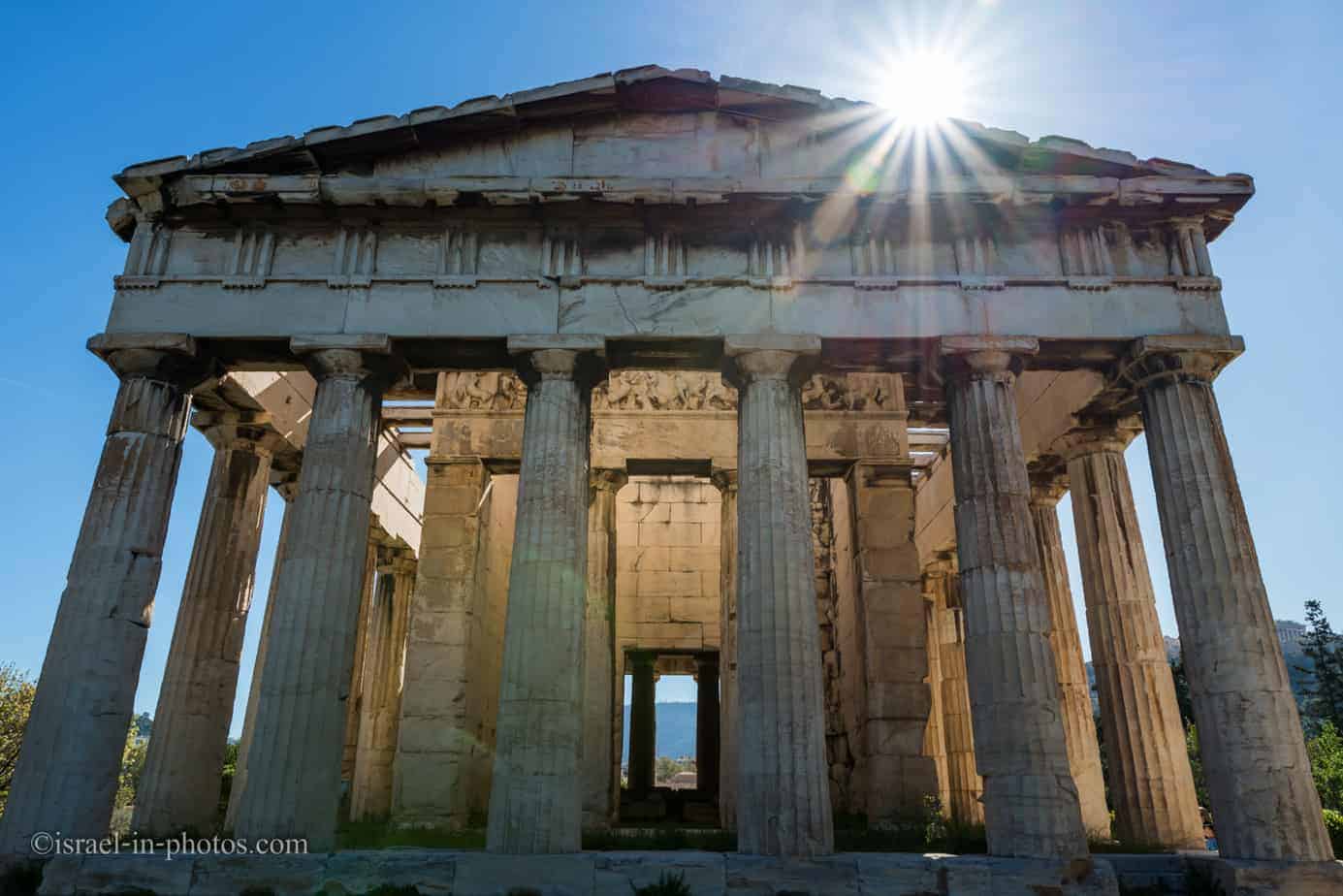



E’ the town that has always surprised me stupendously, whenever I brought groups of pilgrims.
Exciting observe the old walls above the portal.
I am pleased with the management of the Park.